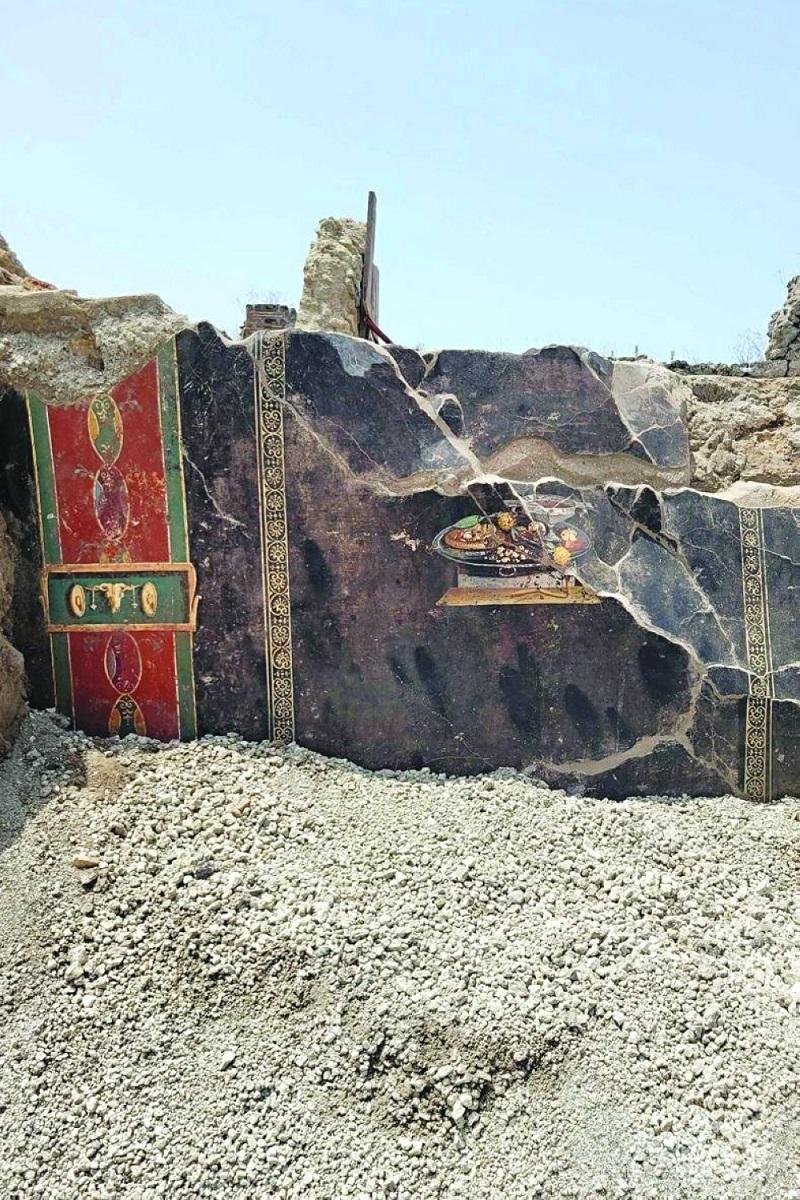Archaeologists in the ancient Roman city of Pompeii have discovered a 2,000-year-old fresco that depicts what could be the ancestor of the Italian pizza.
The painting, found in the hall of a house adjacent to a bakery, showcases a flatbread that may have served as a precursor to the modern dish. Italy’s culture ministry described it as a “distant relative” of pizza, although it lacks the traditional pizza ingredients.
 The newly-uncovered fresco. Credit: Italian Culture Ministry / Archaeological Park of Pompeii
The newly-uncovered fresco. Credit: Italian Culture Ministry / Archaeological Park of Pompeii
The fresco was unearthed this year during ongoing excavations of Regio IX, one of Pompeii’s nine districts. The site, famously buried under volcanic ash following the eruption of Mount Vesuvius in AD 79, has been a treasure trove for archaeologists since its discovery in the 16th century.
The freshly discovered painting features a flatbread displayed on a silver platter, accompanied by fruits like pomegranates and dates, as well as a goblet filled with red wine.
The archaeologists speculate that the bread might have been consumed with these fruits or dressed with spices and a type of pesto sauce. The juxtaposition of the simple meal with the luxurious silver trays in the painting is believed to highlight the contrast between frugality and opulence.
Gabriel Zuchtriegel, the director of Pompeii, drew parallels between the ancient fresco and the rise of pizza as a global culinary phenomenon. He noted that pizza, originating as a humble dish in southern Italy, has now achieved worldwide popularity, even finding its way into Michelin-starred restaurants. The location of Pompeii, just 14 miles away from Naples—the modern-day epicenter of Italian pizza—adds further significance to the discovery.
During the recent excavations, the remains of three individuals were also found near the bakery’s oven.
While the newfound fresco cannot be strictly classified as a pizza due to the absence of traditional ingredients like tomato and mozzarella, it serves as a testament to the evolution of culinary traditions.
Pompeii’s culture ministry suggests that the flatbread may have served as a “hospitable gift” to guests, drawing from ancient Greek customs dating back to the 3rd to 1st centuries BC. This cultural exchange highlights the interconnectedness of civilizations and the evolution of cuisine over time.
The recent revitalization of Pompeii’s archaeological activities has been made possible through a 105-million-euro ($114.85 million) EU-funded project, aimed at preserving and restoring the site after years of neglect.
 Archaeologists believe they have discovered a fresco depicting an ancestor of the Italian pizza. Credit: Archaeological Park of Pompeii / Italian Culture Ministry
Archaeologists believe they have discovered a fresco depicting an ancestor of the Italian pizza. Credit: Archaeological Park of Pompeii / Italian Culture Ministry
According to Reuters, the ongoing excavations have revealed new sections of the city, including the atrium of a house with an adjacent bakery. This house had been partially explored in the 19th century, but further investigations have now unearthed additional insights into the lives of Pompeii’s inhabitants.
The eruption of Mount Vesuvius engulfed Pompeii in ash, resulting in the instant death of its inhabitants. The preservation of the city in this catastrophic event has allowed archaeologists to delve into its rich history. The fresco’s discovery provides archaeologists with another intriguing piece of the puzzle as they continue to unravel the mysteries of Pompeii.





